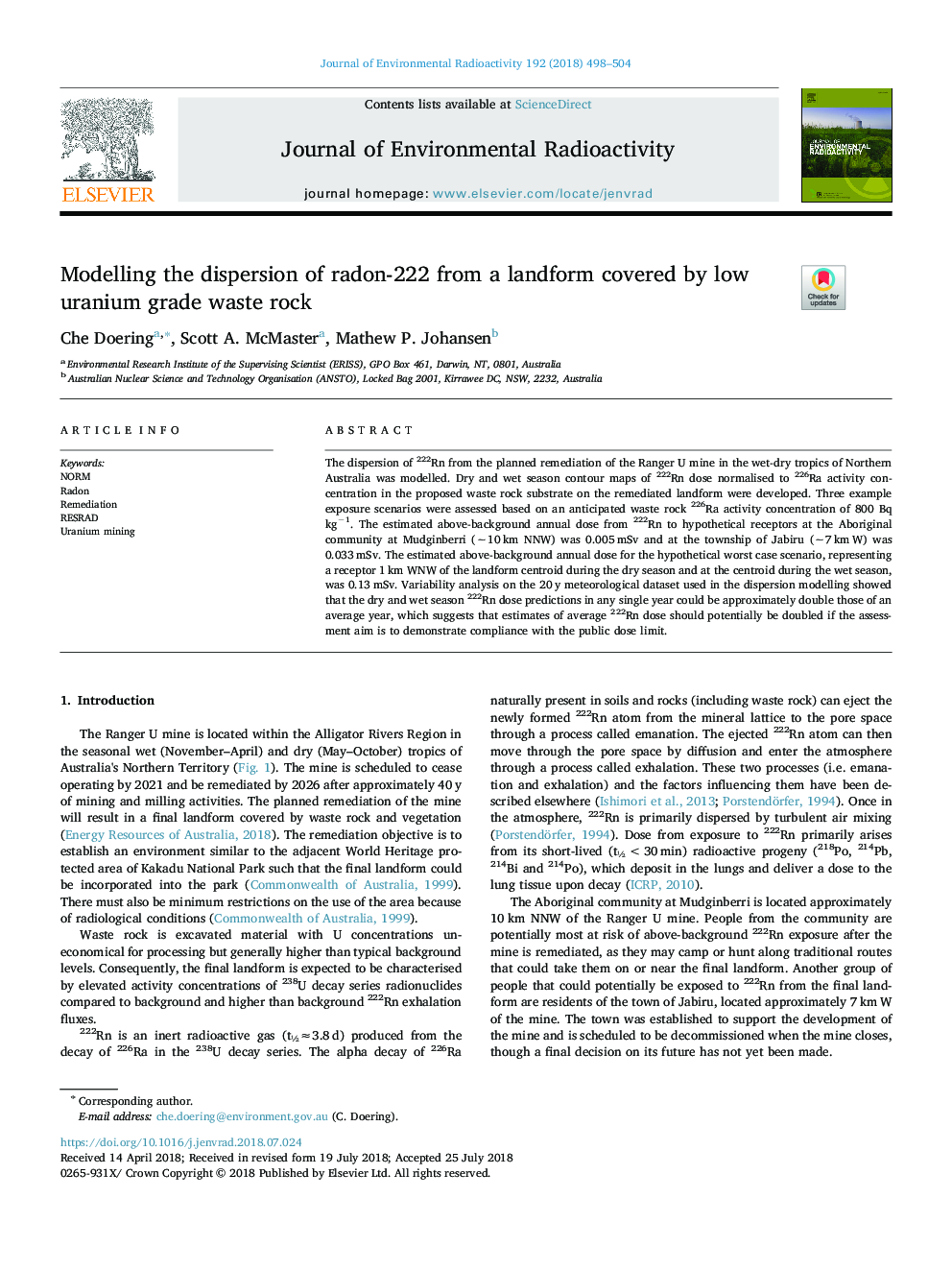| Article ID | Journal | Published Year | Pages | File Type |
|---|---|---|---|---|
| 8080364 | Journal of Environmental Radioactivity | 2018 | 7 Pages |
Abstract
The dispersion of 222Rn from the planned remediation of the Ranger U mine in the wet-dry tropics of Northern Australia was modelled. Dry and wet season contour maps of 222Rn dose normalised to 226Ra activity concentration in the proposed waste rock substrate on the remediated landform were developed. Three example exposure scenarios were assessed based on an anticipated waste rock 226Ra activity concentration of 800 Bq kgâ1. The estimated above-background annual dose from 222Rn to hypothetical receptors at the Aboriginal community at Mudginberri (â¼10â¯km NNW) was 0.005â¯mSv and at the township of Jabiru (â¼7â¯kmâ¯W) was 0.033â¯mSv. The estimated above-background annual dose for the hypothetical worst case scenario, representing a receptor 1â¯km WNW of the landform centroid during the dry season and at the centroid during the wet season, was 0.13â¯mSv. Variability analysis on the 20â¯y meteorological dataset used in the dispersion modelling showed that the dry and wet season 222Rn dose predictions in any single year could be approximately double those of an average year, which suggests that estimates of average 222Rn dose should potentially be doubled if the assessment aim is to demonstrate compliance with the public dose limit.
Keywords
Related Topics
Physical Sciences and Engineering
Energy
Nuclear Energy and Engineering
Authors
Che Doering, Scott A. McMaster, Mathew P. Johansen,
